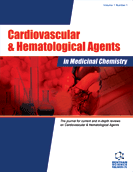Abstract
Intracellular calcium dynamics play a very important role in mediating contraction and signalling in cardiomyocytes and vascular smooth muscle cells. A number of calcium transporters have been identified that orchestrate a complex process of excitation-contraction coupling and molecular signalling. Despite the variability of the calcium transporters expressed in cardiomyocytes, most calcium channel blockers used therapeutically target the L-type calcium channel and exhibit antihypertensive and/or vasodilating activities. Recently, another calcium pump which is located in the sarcolemma has been shown to mediate cardiac contractility and vascular tone. Interestingly, this sarcolemmal calcium pump (also known as Plasma Membrane Calcium/calmodulin dependent ATPase or PMCA) exerts its function not by altering global calcium concentration, but by mediating signal transduction pathways. This review will discuss recent advances that support the key roles of PMCA as signalling molecule and the potential to target this calcium pump as a novel approach for the treatment of cardiovascular disease.
Keywords: Calcium, signalling, nitric oxide, contractility, hypertrophy
Cardiovascular & Hematological Agents in Medicinal Chemistry
Title: Targeting the Sarcolemmal Calcium Pump: A Potential Novel Strategy for the Treatment of Cardiovascular Disease
Volume: 5 Issue: 4
Author(s): Delvac Oceandy, Mamas A. Mamas and Ludwig Neyses
Affiliation:
Keywords: Calcium, signalling, nitric oxide, contractility, hypertrophy
Abstract: Intracellular calcium dynamics play a very important role in mediating contraction and signalling in cardiomyocytes and vascular smooth muscle cells. A number of calcium transporters have been identified that orchestrate a complex process of excitation-contraction coupling and molecular signalling. Despite the variability of the calcium transporters expressed in cardiomyocytes, most calcium channel blockers used therapeutically target the L-type calcium channel and exhibit antihypertensive and/or vasodilating activities. Recently, another calcium pump which is located in the sarcolemma has been shown to mediate cardiac contractility and vascular tone. Interestingly, this sarcolemmal calcium pump (also known as Plasma Membrane Calcium/calmodulin dependent ATPase or PMCA) exerts its function not by altering global calcium concentration, but by mediating signal transduction pathways. This review will discuss recent advances that support the key roles of PMCA as signalling molecule and the potential to target this calcium pump as a novel approach for the treatment of cardiovascular disease.
Export Options
About this article
Cite this article as:
Oceandy Delvac, Mamas A. Mamas and Neyses Ludwig, Targeting the Sarcolemmal Calcium Pump: A Potential Novel Strategy for the Treatment of Cardiovascular Disease, Cardiovascular & Hematological Agents in Medicinal Chemistry 2007; 5 (4) . https://dx.doi.org/10.2174/187152507782109890
| DOI https://dx.doi.org/10.2174/187152507782109890 |
Print ISSN 1871-5257 |
| Publisher Name Bentham Science Publisher |
Online ISSN 1875-6182 |
 6
6
- Author Guidelines
- Bentham Author Support Services (BASS)
- Graphical Abstracts
- Fabricating and Stating False Information
- Research Misconduct
- Post Publication Discussions and Corrections
- Publishing Ethics and Rectitude
- Increase Visibility of Your Article
- Archiving Policies
- Peer Review Workflow
- Order Your Article Before Print
- Promote Your Article
- Manuscript Transfer Facility
- Editorial Policies
- Allegations from Whistleblowers
Related Articles
-
Muscle Atrophy Classification: The Need for a Pathway-Driven Approach
Current Pharmaceutical Design Patent Selections:
Recent Patents on Regenerative Medicine Treatment Options for Post-Transplantation Diabetes Mellitus
Current Diabetes Reviews Recent Advances in Optimal Adjunctive Antithrombotic Therapy in STEMI Patients Undergoing Primary Angioplasty: An Overview
Current Vascular Pharmacology Lactate Transporters and pH Regulation: Potential Therapeutic Targets in Glioblastomas
Current Cancer Drug Targets Peroxisome Proliferator-Activated Receptor-γ in Vascular Biology
Cardiovascular & Hematological Disorders-Drug Targets Endogenous Retroelements in Cellular Senescence and Related Pathogenic Processes: Promising Drug Targets in Age-Related Diseases
Current Drug Targets Fibroblast Growth Factors/Fibroblast Growth Factor Receptors as Targets for the Development of Anti-Angiogenesis Strategies
Current Pharmaceutical Design Clinical Applications of Nanotechnology in Atherosclerotic Diseases
Current Nanoscience Manipulating Thymic Apoptosis for Future Therapy of Autoimmune Diseases
Current Pharmaceutical Design Update on Anti-TNF-Alpha Treatment in Rheumatic Diseases
Current Drug Therapy Diabetic Cardiovascular Disease – AMP-Activated Protein Kinase (AMPK) as a Therapeutic Target
Cardiovascular & Hematological Agents in Medicinal Chemistry Phosphoinositide-3 Kinase Signaling in Cardiac Hypertrophy and Heart Failure
Current Pharmaceutical Design Apoptosis: Potential Therapeutic Targets for New Drug Discovery
Current Medicinal Chemistry Extracorporeal Lung Assist for Sepsis and Acute Respiratory Distress Syndrome
Cardiovascular & Hematological Disorders-Drug Targets Role of PPAR-γ Agonist Thiazolidinediones in Treatment of Pre-Diabetic and Diabetic Individuals: A Cardiovascular Perspective
Current Drug Targets - Cardiovascular & Hematological Disorders G Protein Coupled Receptors as Drug Targets: The Role of β-Arrestins
Endocrine, Metabolic & Immune Disorders - Drug Targets The Pathophysiological Basis of Carotid Baroreceptor Stimulation for the Treatment of Resistant Hypertension
Current Vascular Pharmacology Adult Stem Cells and Extracellular Vesicles in Acute and Chronic Kidney Injury
Current Regenerative Medicine (Discontinued) Primary and Secondary Insomnia: Prevalence, Causes and Current Therapeutics
Current Medicinal Chemistry - Central Nervous System Agents


























